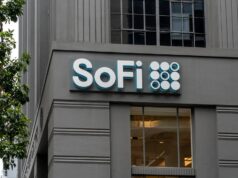TL;DR
- Balancer DAO approved an $8 million reimbursement package using recovered assets and treasury funds after last month’s exploit.
- Eligibility will be based on snapshot data taken before the attack, with automated payouts sent to active, verified addresses.
- Distribution is expected to begin in Q4 2025 once audits and allocation contracts are finalized.
Balancer’s reimbursement plan has moved into its implementation phase after the community approved an $8 million reimbursement package for liquidity providers affected by last month’s exploit. The vote marks the first concrete round of compensation following the multi-chain attack that drained more than $120 million across several of Balancer’s vaults and forked integrations. As part of the broader reimbursement effort, the Balancer DAO aims to deliver partial relief to users while the protocol finalizes its longer-term recovery steps.
A Brief Look Back at the Exploit
The payout is rooted in the fallout of the November attack, which affected Balancer’s v2 Vaults and multiple forks. Total losses ranged from $116 million to $128 million, depending on the chain and pool tracked. Only a fraction of the stolen assets were recovered, returned, or frozen across exchanges. Those recovered tokens now form the basis of Balancer’s post-hack recovery process. The rest of the reimbursement package will come from the treasury. The community approved a supplemental allocation to cover the gaps of concentrated losses.
What Balancer’s Reimbursement Package Includes
The newly approved framework serves as the operational blueprint for compensating users. Balancer’s community has been clear that the recovery will not be full restitution. Rather, the reimbursement program will return a proportional share of recovered assets to liquidity-providers. The proposal outlines a structured recovery fund sourced from returned tokens, treasury reserves, and surplus protocol revenue. Instead of attempting to replicate complex pool states or partial LP positions, the DAO will rely on a snapshot of user balances taken shortly before the exploit.
Eligibility is determined by pool participation and verified wallet balances at the time of the attack. This structure functions as a practical payout eligibility model, allowing Balancer to offset losses without recreating each pool’s internal accounting. For many LPs, it will be the first meaningful step toward compensation after the payouts tied to the hack stalled in the immediate aftermath of the Balancer breach. Although the package accounts for only a small percentage of total losses, the plan offers clarity on how affected users will receive their share of returned funds.
How the DAO Voted
Community governance played a central role in moving the plan forward. During the DAO vote, Balancer delegates and token holders approved the reimbursement package with broad consensus. Clearly, the community is committed to stabilizing user trust. The vote also included administrative steps. It enabled the treasury to release recovered assets and authorized the use of protocol revenue. Further, it coordinated with third-party auditors to validate the reimbursement data. Governance contributors emphasized transparency and communication. They wanted to ensure users could track how the plan evolved and how the final distribution would be executed.
This governance process doubled as a stress test for Balancer’s decentralized structure. The protocol had to balance user expectations, treasury limits, and legal considerations while crafting a payout plan that could withstand scrutiny.
How the Funds Will Be Distributed
Execution will rely on a controlled treasury distribution that moves assets to a dedicated allocation contract. From there, the contract will release balances to eligible users based on snapshot data. The distribution model prioritizes stablecoins where possible, though some of the returned assets may be delivered in their native form.
The recovery fund distribution workflow includes multiple verification layers. Balancer’s core contributors have coordinated with independent auditors to review all pool data, returned tokens, and treasury allocations. A public dashboard will give LPs visibility into the dispersal process. It will display the amounts claimed, unclaimed balances, and the status of any assets still pending verification.
Community & Market Reaction
Early reaction has been cautiously positive. Many LPs expressed relief that a structured plan is moving forward, even if payouts cover only a small slice of total losses. Others noted that the recovery fund represents a meaningful attempt at user restitution in a space where many protocols historically decline compensation after exploits. Market response has been muted but stabilizing, with BAL trading within a narrow range as sentiment improves.
>>> Read more: Elixir deUSD Collapse Exposes Synthetic Stablecoin Risk
What Comes Next
With community approval secured, the Balancer reimbursement plan now advances to execution. Distribution is expected to begin in Q4 once audits are finalized and the allocation contract is funded. The protocol’s leadership sees this as a critical milestone in its user-compensation efforts and in rebuilding confidence after one of the year’s largest DeFi breaches.
Balancer still faces a long road toward full restoration. However, the reimbursement package marks a significant step toward honoring user losses. It also demonstrates that decentralized governance can coordinate a structured response when crises strike.
Readers’ frequently asked questions
Will users need to manually claim their reimbursement or will it be sent automatically?
Balancer plans to automate most distributions. If an eligible address still holds the same wallet, funds will be sent directly once the allocation contract is live. Only users who no longer control the original wallet, or who interacted through custodial platforms, may need to submit a manual claim later.
What happens if a liquidity provider used a DeFi aggregator like Yearn, Beefy, or Instadapp?
Aggregator users may not receive funds directly. Some platforms held LP tokens on behalf of users, so Balancer will reimburse the aggregator’s wallet. It is then up to the aggregator to pass the reimbursement to its depositors, depending on how each platform handles pooled or tokenized positions.
Will the reimbursement affect Balancer’s treasury or future development plans?
Yes. Part of the payout comes from the treasury, which reduces Balancer’s available budget for grants, liquidity incentives, and v3 development. Contributors have stated that the protocol will reevaluate spending priorities in 2026 to rebuild reserves and maintain long-term sustainability.
What Is In It For You? Action items you might want to consider
Check whether wallets used for Balancer pools are still active and accessible
If you changed wallets since the exploit or used temporary addresses, make sure you still control the original wallet. Automated distributions can only be sent to addresses that remain valid.
Contact any DeFi aggregators or vault platforms you used
If you accessed Balancer pools through platforms like Yearn, Beefy, or Instadapp, your reimbursement will go to the aggregator’s wallet. You may need to follow their internal process to receive your share.
Follow Balancer’s official governance and reimbursement updates
Monitor Balancer’s governance forum and reimbursement dashboard for inclusion lists, contract funding updates, and distribution timelines so you can confirm whether you qualify and when your payout is expected.










